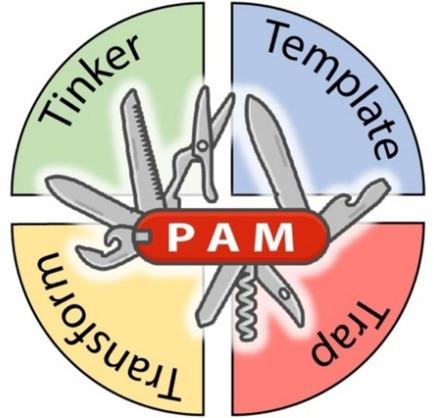当前位置:
X-MOL 学术
›
ChemPlusChem
›
论文详情
Our official English website, www.x-mol.net, welcomes your feedback! (Note: you will need to create a separate account there.)
Covalent Post-Assembly Modification: A Synthetic Multipurpose Tool in Supramolecular Chemistry.
ChemPlusChem ( IF 3.4 ) Pub Date : 2020-06-12 , DOI: 10.1002/cplu.202000279 Haoxiang Zeng 1 , Luke Stewart-Yates 1 , Louis M Casey 1 , Nick Bampos 2 , Derrick A Roberts 1
ChemPlusChem ( IF 3.4 ) Pub Date : 2020-06-12 , DOI: 10.1002/cplu.202000279 Haoxiang Zeng 1 , Luke Stewart-Yates 1 , Louis M Casey 1 , Nick Bampos 2 , Derrick A Roberts 1
Affiliation

|
The use of covalent post‐assembly modification (PAM) in supramolecular chemistry has grown significantly in recent years, to the point where PAM is now a versatile synthesis tool for tuning, modulating, and expanding the functionality of self‐assembled complexes and materials. PAM underpins supramolecular template‐synthesis strategies, enables modular derivatization of supramolecular assemblies, permits the covalent ‘locking’ of unstable structures, and can trigger controlled structural transformations between different assembled morphologies. This Review discusses key examples of PAM spanning a range of material classes, including discrete supramolecular complexes, self‐assembled soft nanostructures and hierarchically ordered polymeric and framework materials. As such, we hope to highlight how PAM has continued to evolve as a creative and functional addition to the synthetic chemist's toolbox for constructing bespoke self‐assembled complexes and materials.
中文翻译:

共价组装后修饰:超分子化学中的合成多功能工具。
近年来,在超分子化学中共价组装后修饰(PAM)的使用已显着增长,以至于PAM现在已成为一种多功能的合成工具,用于调节,调节和扩展自组装复合物和材料的功能。PAM支持超分子模板合成策略,实现超分子组装的模块化衍生化,允许不稳定结构的共价“锁定”,并可以触发不同组装形态之间受控的结构转变。本综述讨论了PAM的关键示例,这些PAM涵盖了一系列材料类别,包括离散的超分子复合物,自组装的软纳米结构以及分层有序的聚合物和骨架材料。因此,
更新日期:2020-06-12
中文翻译:

共价组装后修饰:超分子化学中的合成多功能工具。
近年来,在超分子化学中共价组装后修饰(PAM)的使用已显着增长,以至于PAM现在已成为一种多功能的合成工具,用于调节,调节和扩展自组装复合物和材料的功能。PAM支持超分子模板合成策略,实现超分子组装的模块化衍生化,允许不稳定结构的共价“锁定”,并可以触发不同组装形态之间受控的结构转变。本综述讨论了PAM的关键示例,这些PAM涵盖了一系列材料类别,包括离散的超分子复合物,自组装的软纳米结构以及分层有序的聚合物和骨架材料。因此,


























 京公网安备 11010802027423号
京公网安备 11010802027423号